The First Bulgarian Empire is the name that encompasses two medieval periods that took place over more than three centuries in the Balkans, in which the Danube Bulgarian Khanate (681-864) and then the Bulgarian Tsardom (864) succeeded each other. -1018). During that time, the historical ups and downs were diverse and ended with the defeat and annexation by the Byzantine Empire. But what we are going to see here today is not the end but its beginnings, which had as the undisputed protagonist who is considered its founder, Asparukh.
As we all know, the Romans called Thrace the strategic Balkan region that stretched from Macedonia to the Black Sea and from the Aegean to the Danube River. Although today it is identified with Bulgaria, in reality it only included the southeastern half of it (the northwestern one was Moesia), also comprising the European part of Turkey and the northeast of Greece. However, the peoples who inhabited these provinces plus other neighboring ones such as Dacia or Dardania, for example, were a mixture of Thracians and Getae who later, after the Hun invasions, received an extra Turkic contribution:that of the Bulgarians.
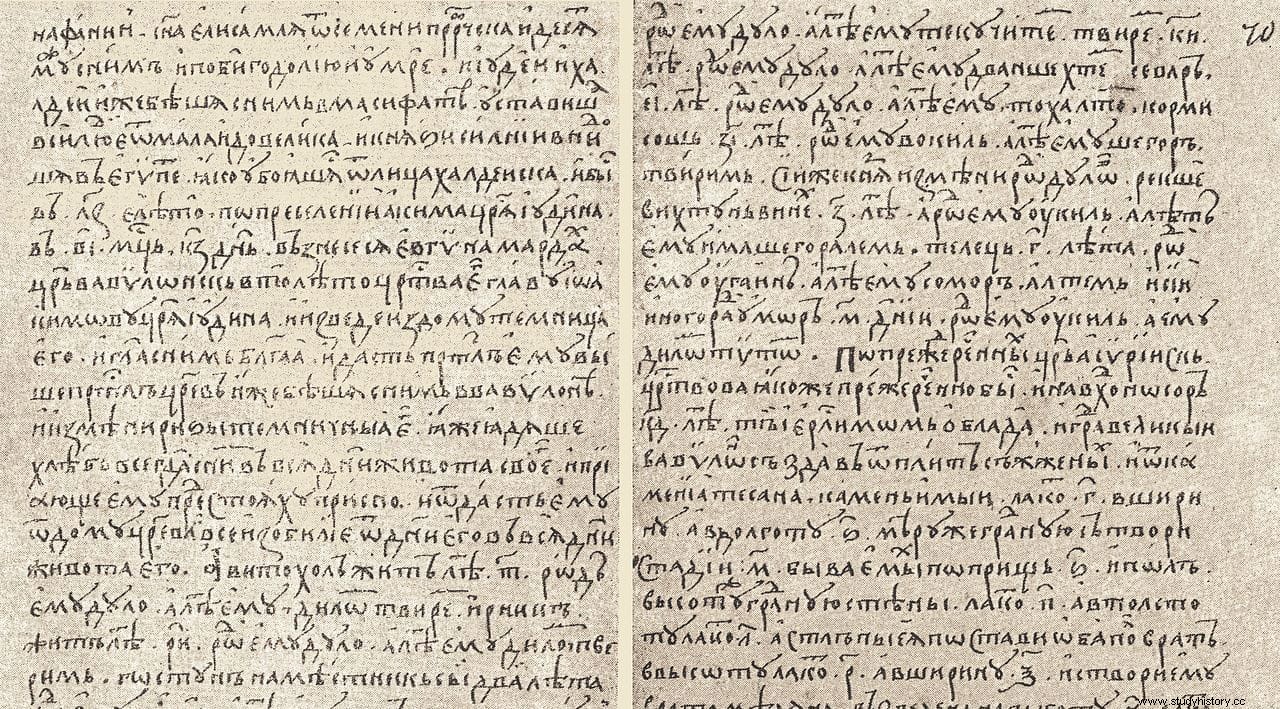
They arrived around the 7th century AD. but they mixed with the locals so deeply that it is impossible to determine the chronology with precision and that is why they are also often referred to as proto-Bulgarians. If it is taken for granted that the first known historical ruler was Avitohol, who lived in the 5th century, it is possible that he can be identified with Attila, since his son Ernak would have the same name as the younger scion of the famous Hunnic chieftain. At least, that is what the Nominalia of the Khans of Bulgaria indicates. , a manuscript found in 1861 which, as its title indicates, is a list of the first Bulgarian rulers with their corresponding chronology.
The problem of Nominalia it is that its content is semi-fantastic and, for example, Avitohol is attributed a reign of three hundred years and his successor another one hundred and fifty, which makes things difficult. In any case, they were followed by Gostun, Kubrat (or Kurt) and Bezmer, after whom Asparukh rose to power. Since the khanate was hereditary, all the previous ones belonged to the Dulo clan - presumably originated by Attila - except Gostun, who was from the Ermi because he only exercised the regency while Kubrat was absent in Constantinople, as a hostage.
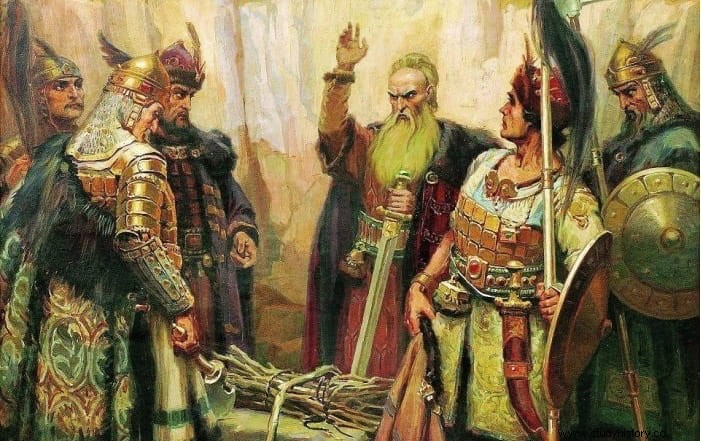
Asparukh was also a Dulo, a young son of Kubrat. His tribe came from Onugaria (which the Byzantine chroniclers called Great Bulgaria ), territory that his father had occupied and was located in the steppes that separated the Dniester and Volga rivers (in its lower course), extending to the North Caucasus. In this new emigration, they settled between what is now southern Bessarabia (the former Soviet republic of Moldova except Transnistria and part of Ukraine) and northern Dobruja (which encompassed a territory currently occupied by the Danube delta, the coast of Romania and the coast of Bulgaria in the Black Sea).
They were a confederation of two tribes, the Onogurs and the Utrigurs (although some also include the Avars), who numbered a considerable number, between thirty and fifty thousand people. They were launched in 670, guided by Asparukh, after the death of his father, with whom he learned the work of governing and the trade of arms. Kubrat's death had taken place around the year 665 AD. and the succession initially fell to his eldest son, Batbayan, also known as Bayan or Bezmer. However, he only reigned three years because he got involved in a war with the Eastern Khazars and was taken prisoner along with his sister Huba; the state disintegrated.
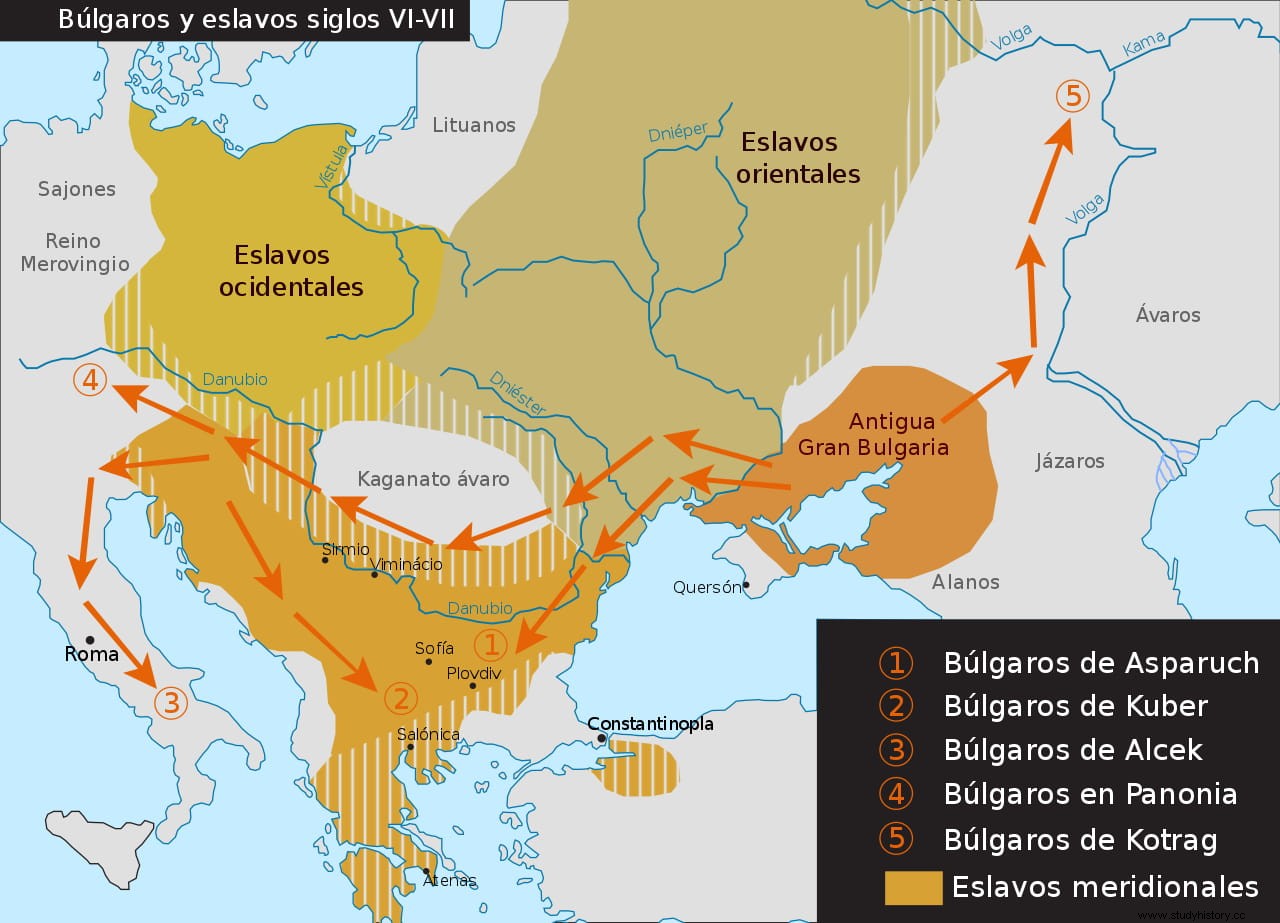
Consequently, a part of the Bulgarians (or proto-Bulgarians), led by Kotrag (another son of Kubrat), left behind their old country to settle in the so-called Volga Bulgaria, at the confluence of the Volga and Kama rivers, in the current republics. Russians from Tatarstan and Chuvasia. The other group was the one led by Asparukh, who continued to the west taking advantage of the defenseless state of the Byzantine borders, because at that time Constantinople was besieged by Muawiya I, the caliph of Damascus, founder of the Umayyad dynasty.
This time the Muslims would crash into the city walls and Greek fire, having to retreat. But the accumulation of troops that Emperor Constantine IV was forced to do to repel them, allowed the newcomers to settle in that new land, which they called Ongala. Of course, the Byzantines were unwilling to accept this intrusion, not least because the Bulgarians had been joined by the Siverians (the traditional seven Slavic tribes) and the number of outsiders soared to between half a million and eight hundred thousand people.
Thus, once the Umayyad danger was removed, the emperor undertook a campaign against them in 680, forcing them to take refuge in Peuce, an island in the Danubian delta that no longer exists (it disappeared in the High Middle Ages, when the tributaries changed their course). of the Danube), but which was then located in Scythia Minor (what is now the Romanian county of Tulcea) and reached a size similar to that of Rhodes. It was a good place because the river ran so fast and the banks were so steep that it was a natural fortress; in fact, it was there that the tribal king Sirmium entrenched himself in the first half of the 4th century BC. to defend against the Macedonian army of Alexander the Great, managing to repel his attack.

Constantine IV appeared in command of a large squadron as his cavalry, brought from Asia Minor by way of Thrace, crossed the Danube. But the emperor was sick in one leg and had to leave the front to go to the Black Sea to recover, according to one version to Anchialo (the current Bulgarian tourist town of Pomorie) and according to another to Mesembria (today Nesebar), something that negatively influenced in the spirit of his army when the rumor spread that he was fleeing. Consequently, several mounted units deserted in the middle of the operation, reducing the available forces. In reality, the imperial hostility was not for the sake of it. Asparukh had carried out attacks on some Byzantine border fortresses in the south, so there really was a potential threat, especially after the alliance between the Bulgarians and the Slavs.
These built a series of wooden bastions on the northern bank of the Danube near the aforementioned Peuce; It was an area of marshes that facilitated its defense and reduced the strength of Constantine's fifty thousand men, forcing them to divide into smaller contingents, something that worsened the aforementioned desertions. The various Byzantine groups, further hampered by the swampy terrain, were powerless to overcome the palisades and when the enemy became aware of his plight they hurled their cavalry through the gates, wreaking havoc as they met no opposition. In despair, the Imperial soldiers began a disorderly retreat that, as is often the case, ended in disaster.
This was narrated by Nicephorus I, Patriarch of Constantinople and author of a history of the period entitled Chronographikon syntomon :
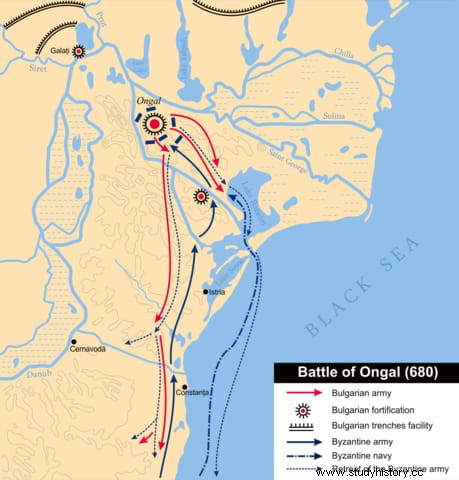
It was, in short, the battle of Ongal, which definitively opened the door to the mountainous lands north of Stara Planina, the Balkan mountain range (extension of the Carpathians), for the Bulgarians, allowing them to settle in Moesia, the center of Bulgaria. . It is considered that the foundations of the first Slavic state were laid there, since the allied tribes, being numerically superior, assimilated the Bulgarians and by the 10th century they had already lost the Bulgarian language, their Ogur Turkic language, to the benefit of the danubiana (although, on the other hand, those of North Bulgaria did keep it).
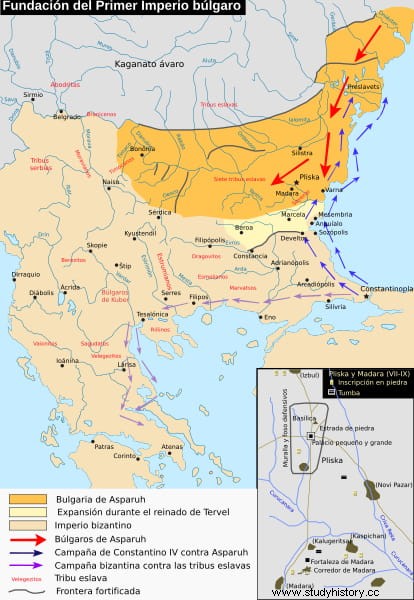
The fact is that, the following year, the Bulgarians spread throughout Thrace and again defeated the Byzantines. Constantine IV had to give in and sign a treaty in which he paid an annual tribute to keep the peace and even recognized the state created by Asparukh. The foundation of the two most important cities is traditionally attributed to him; one was Pliska, which was the capital until 893 (when it passed to neighboring Preslav, although some authors believe that the capital was Varna) and ended up destroyed in 972; and Drastar, which actually stood on Roman Durostporum and is now called Silistra.
Asparukh is also considered to have been the promoter of the walls of a limes between the Danube and the Black Sea. The reason? The pressure being exerted by the Khazars, against whom the Bulgarians were still at war; in fact, they managed to seize the lands west of the Dniester, putting Asparukh in a difficult situation and forcing him to sign a new alliance with the Slavs whereby he would hold off the eastern enemy while they would deal with the Avars, who had taken over. established north of the Carpathians, in Pannonia (they also left the Pontic steppe under Khazarian pressure) and threatened to create a double front.
Asparukh died in 701 precisely fighting the Khazars around the Dnieper, where some historians place his tomb (specifically near Voznesenka, in the Ukraine). He was succeeded by his son Tervel, who after helping Justinian II to recover the Byzantine throne in 705 and coming to his aid in the new Muslim siege of 718, for which he was hailed as Savior of Europe , received Zagore (northern Thrace), the title of Caesar (something surely helped by the fact that he was a Christian, like his grandfather Krubat) and, possibly, the hand of Princess Anastasia (the emperor's daughter and his wife Eudoxia ).
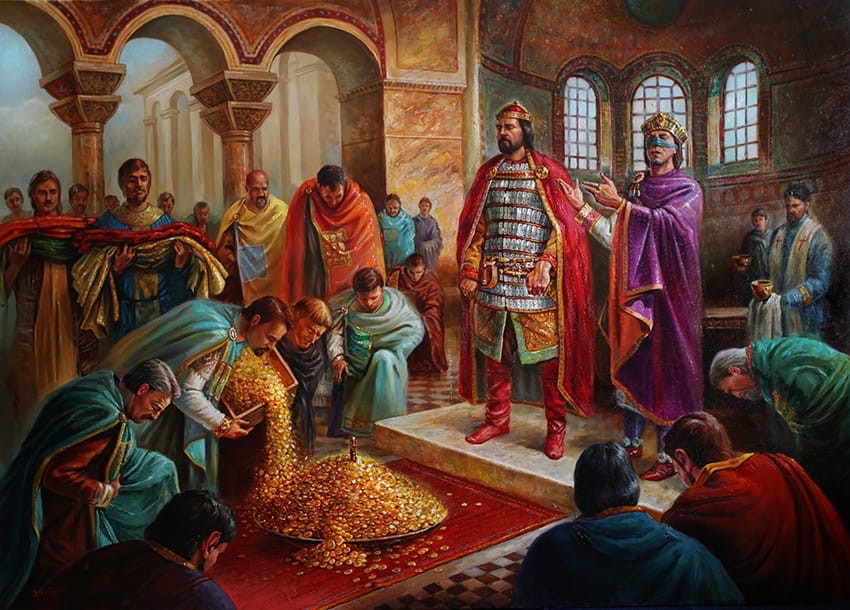
In this way, by gaining the trust of Constantinople, the First Bulgarian Empire was definitively founded, becoming the great continental power during the following centuries together with the Byzantine and Frankish empires.
